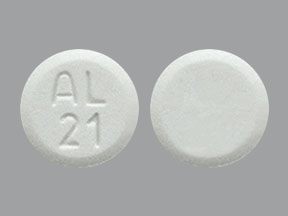Sitavig Dosage
Generic name: ACYCLOVIR 50mg
Dosage form: tablet, orally disintegrating, delayed release
Drug class: Purine nucleosides
Medically reviewed by Drugs.com. Last updated on Jun 1, 2023.
Basic Dosing Information
One SITAVIG 50 mg buccal tablet should be applied as a single dose to the upper gum region (canine fossa).
Administration Instructions
SITAVIG should be applied within one hour after the onset of prodromal symptoms and before the appearance of any signs of herpes labialis lesions. The tablet should be applied with a dry finger immediately after taking it out of the blister. The tablet should be placed to the upper gum just above the incisor tooth (canine fossa) and held in place with a slight pressure over the upper lip for 30 seconds to ensure adhesion. For comfort the rounded side should be placed to the upper gum, but either side of the tablet can be applied. Tablet should be applied on the same side of the mouth as the herpes labialis symptoms.
Once applied, SITAVIG stays in position and gradually dissolves during the day. [See Clinical Pharmacology (12.3)]. In addition,
- SITAVIG should not be crushed, chewed, sucked or swallowed.
- Food and drink can be taken normally when SITAVIG is in place. Avoid any situations which may interfere with adhesion of the tablet such as chewing gum, touching or pressing the tablet after placement, wearing upper dentures, and brushing teeth. If the teeth need to be cleaned while the tablet is in place, rinse the mouth gently. Drink plenty of liquids in the case of dry mouth.
- If SITAVIG does not adhere or falls off within the first 6 hours, the same tablet should be repositioned immediately. If the tablet cannot be repositioned, a new tablet should be placed.
- If SITAVIG is swallowed within the first 6 hours, the patient should drink a glass of water and a new tablet should be applied. [see Patient Counseling Information (17)].
- SITAVIG does not need to be reapplied if the tablet falls out or is swallowed after the first 6 hours.
Frequently asked questions
- Can you drink alcohol while taking acyclovir?
- What would be the benefits of taking valacyclovir vs acyclovir?
More about Sitavig (acyclovir)
- Check interactions
- Compare alternatives
- Reviews (12)
- Drug images
- Latest FDA alerts (3)
- Side effects
- During pregnancy
- FDA approval history
- Drug class: purine nucleosides
- Breastfeeding
- En español
Patient resources
Other brands
Professional resources
Other brands
Related treatment guides
Further information
Always consult your healthcare provider to ensure the information displayed on this page applies to your personal circumstances.

